HEDD Tower Mains
With the HEDD Tower Mains, we open up new horizons for full range studio monitoring systems and to what they can do and mean for the sound engineer. The HEDD Tower Mains let you rediscover what decisive role dynamics play in audio reproduction and how pivotal they are to achieve the highest degree in realism and authenticity. They are more than just tools: They give recording and mastering engineers superior acoustic control over their work.
A modular Main Monitoring system
Modern Main Monitoring Systems have to be cost-effective and flexible enough to work in every possible studio environment. That’s why we designed the HEDD Tower Mains with a modular approach in mind.
They consist of one main unit (TM 80) that can be combined with either 1 or 2 subwoofers per channel. Each sub incorporates 4 drivers in a closed box design and 1.200 W of amplification. The Tower Mains components can be arranged flexibly, depending on the size and geometries of your working space. Due to a sophisticated filter design, you always will have a seamless transition and homogeneous sound: spectacular analog performance meets great versatility.
In the search for precision it was decided to apply closed box designs only as they principally allow the best approximation to ideal transient behaviour. The 3 dB lower efficiency compared to ported designs is compensated and even exceeded by having multiple drivers and enormous amplifier power. The TM 80 main unit with its five speakers in a vertically symmetrical alignment – a quasi d’Appolito configuration with the HEDD Air Motion Transformer as the centerpiece – delivers broad horizontal dispersion but a controlled vertical directivity. Thus unwanted reflexions from the ground or the ceiling are reduced.
The TM 80 is driven by 3x 300 W amplifiers with a response down to 80 Hz. The matching TMS 36 subwoofer comes with four 9” no-compromise long throw drivers and 1.200 W of amplifier power – 300 W per woofer to be more specific. Back to back sitting drivers compensate their impact to the enclosure thus avoiding cabinet resonances, their frequency response starts at 20 Hz (-3 dB) and stops at 80 Hz (-6 dB). The TMS 36 Subwoofer delivers an astounding transient response up to very high SPL levels.
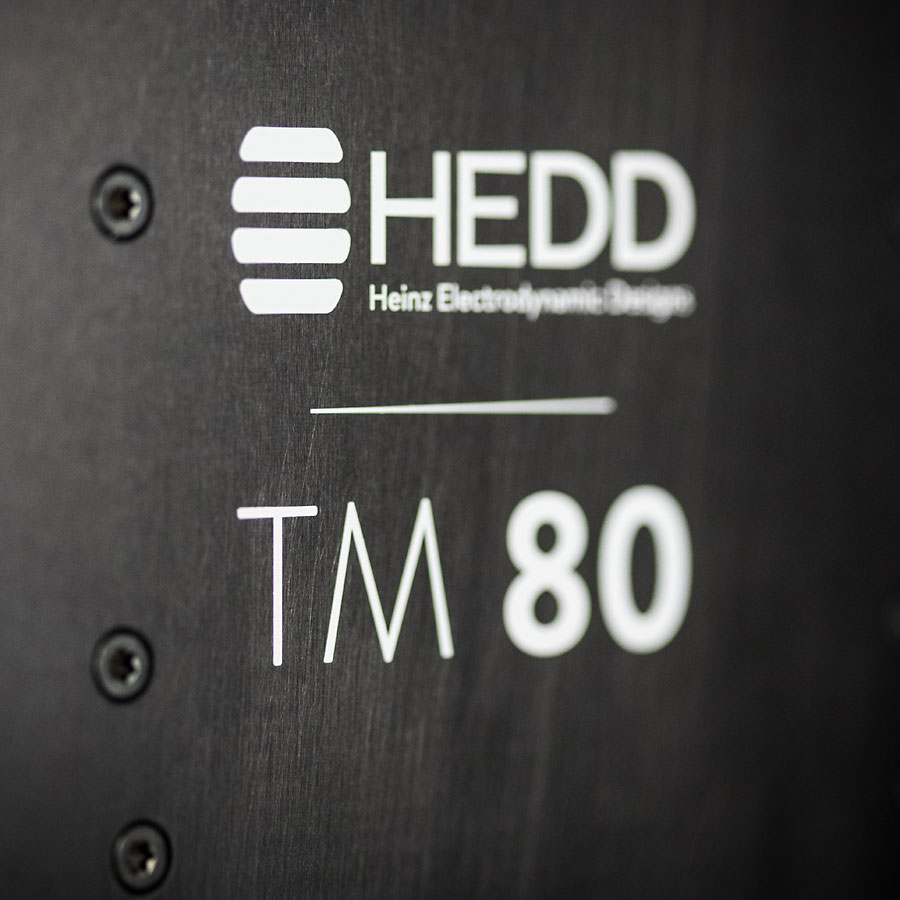
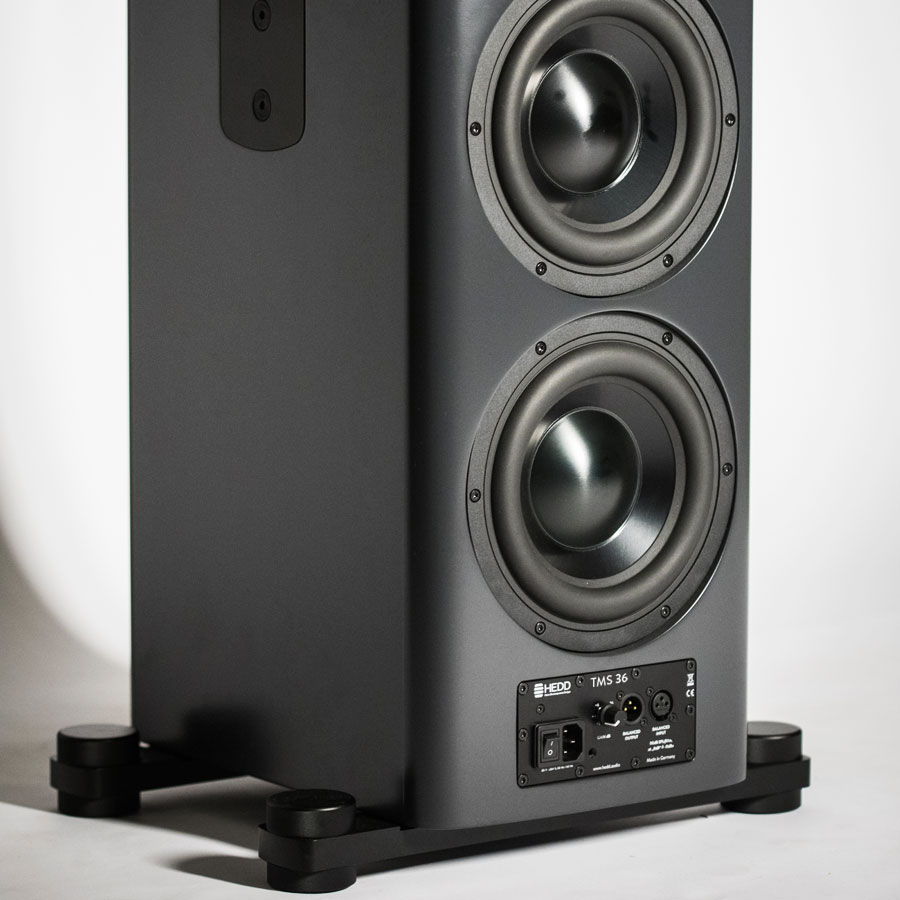
TMS 36 Subwoofer with ICEpower amplification
The driving force in the TMS 36 Subwoofer unit are ICEpower 1200 AS2 modules, a combination of two 1200 W amplifiers and one 1200 W switching power supply. They are a new generation of PWM amplifiers with astounding performance and corresponding technical data. They compare favorably to even the most sophisticated High End amplifiers on the market.
If the woofers are driven in the same frequency band – which is the case here – the ICE modules deliver 600 W each due to the current limitation of the power supply. The advantage of this configuration is that they can output higher voltage peaks than what they can deliver in RMS current, for transients this is more important than the sheer RMS power. So each of the 4 drivers in a TMS 36 subwoofer gets 300 W continuous power with additional headroom. The woofers have an 8 Ω impedance, each amplifiers drives 2 units in parallel, so each unit is directly connected to an amplifier.
ICEpower Amp / Technical Data
- Output power 2x 600 W / 4Ω cont.
- Distortion: 0.003 % THD+N @ 1 kHz, 10 W / 4 Ω (see THD+N vs. power diagram)
- Idle noise: 30 µV A-weighted output noise (see idle noise spectrum diagram)
- Damping factor > 750 into 4 Ω up to 500 Hz
- advanced µ-processor controlled safety guard
- Universal mains including Power Factor Correction (100 – 240 V, 50 – 60 Hz)
Linkwitz Transform
For an optimum in low frequency reproduction closed box designs are the best – theoretically. However frequency response, driver properties and transient behaviour are dependent on each other. Perfect transient behaviour and flat frequency response down to 20 Hz (-3 dB point) in a closed box is achieved by using the Linkwitz Transform. It allows to design an electronic filter for a given subwoofer / cabinet combination that delivers stupendous results.
If a speaker is corrected using this method it turns out to be flat from below resonance to the upper limit of the selected driver. The low frequency roll off point and quality factor Qt are determined by the parameters of the transform circuit, a new freedom for the designer to get the very best in clean and deep bass response – if a rock solid cabinet and specialised drivers are in place.

Idle noise spectrum, 0-20 kHz @
0 dB = 1.200 W / 4 Ohm
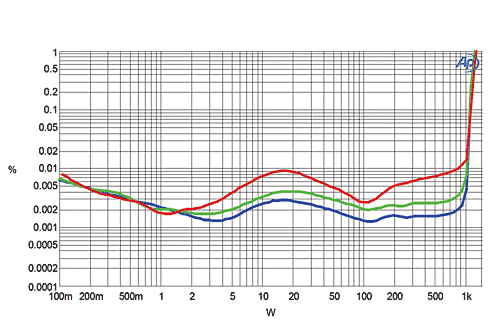
THD+N vs power @ 100 Hz (blue), 1 kHz (green),
6.66 kHz (red), RL=4 Ohm
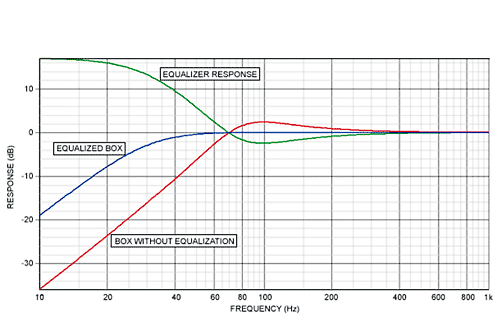
Equalizer response of Linkwitz transform
Summary
- HEDD Tower Mains deliver a stunning reproduction quality up to very high SPLs.
- The modular approach allows different set ups with one or two closed box subwoofers per channel.
- The Tower Mains show advantageous directivity patterns to minimise reflections from the ceiling and the ground.
- With a second Subwoofer on top and the help of the HEDD Lineariser® they are very near to the theoretical ideal of a coherent one point sound source – with stunning dynamic capabilities that surpass those of a 2×18” ported woofer design.
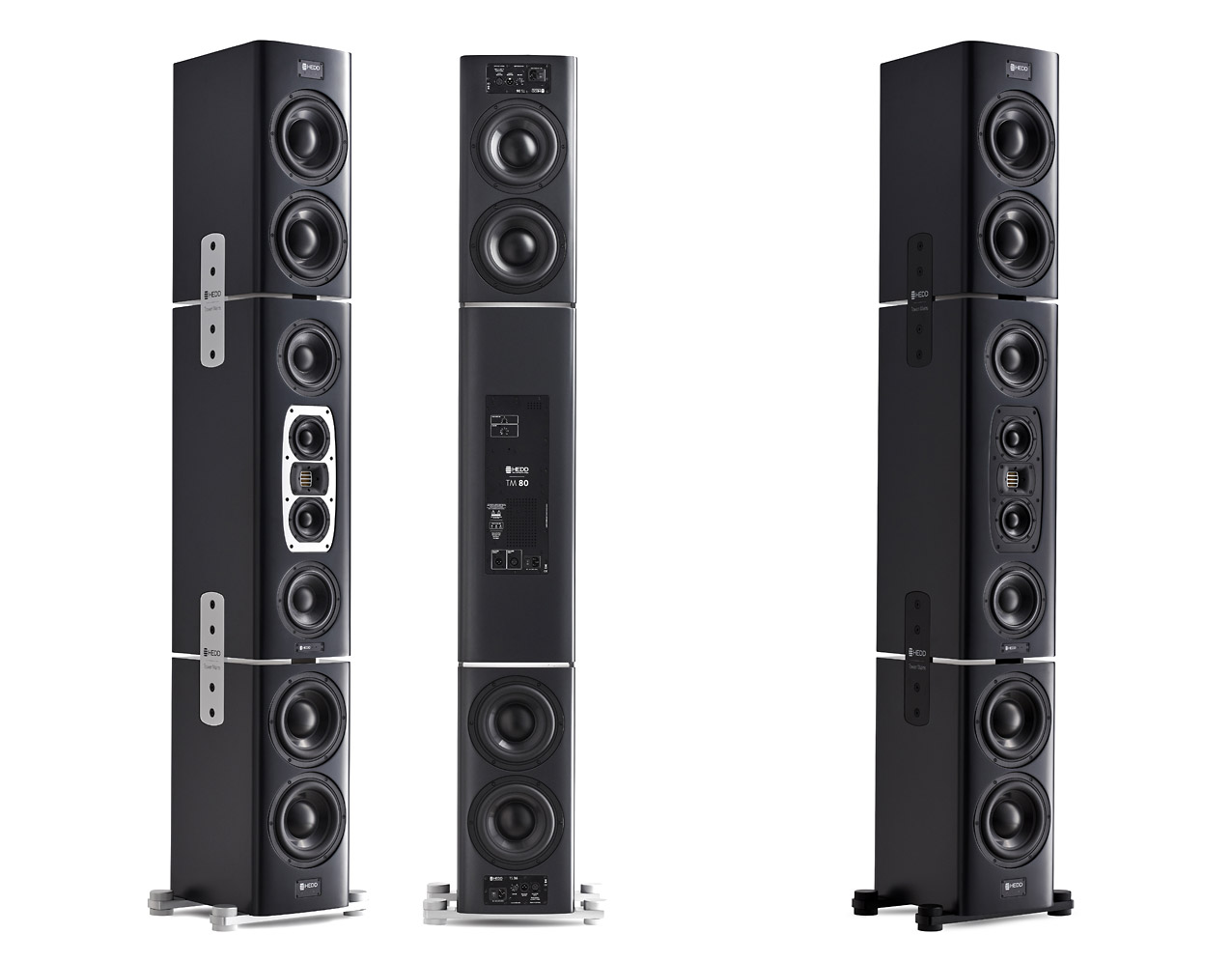
Configurations
HEDD TM 80 and TMS 36 can be configured in different ways as they are designed to complement each other. Subwoofers often enough tend to disintegrate the sound image as they have to play with an unknown satellite partner speaker. Unknown means that the low pass filter of the sub and the high pass filter (or behaviour) of the satellite speaker cannot be foreseen and consequently not be optimised.
HEDD Tower Mains complement each other. 4th order Linkwitz-Riley filters are applied on both units, the mechanical transfer behaviour of the two speakers is taken into account. A minimum phase behaviour and a homogeneous sound are achieved that way, even if the units are placed in slightly varying positions.
The different configurations shown in the drawings offer flexible solutions for different control rooms. Depending on their size a second subwoofer may become desirable, and last not least the TM components allow no compromise multichannel solutions both for High End recording studios and Home Theatre installations.
 TM Standard Tower
TM Standard Tower
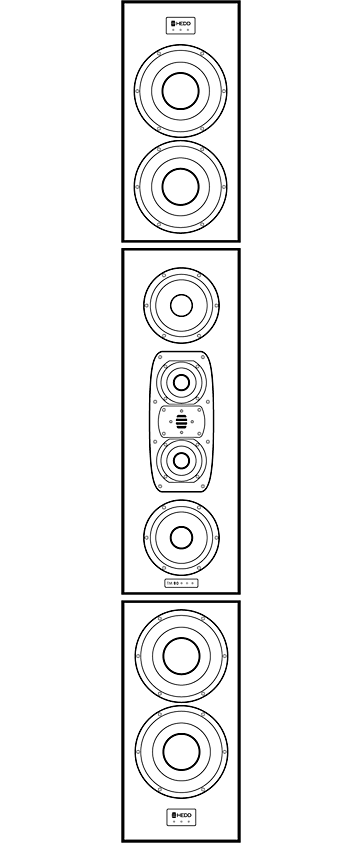 TM Extended Tower
TM Extended Tower
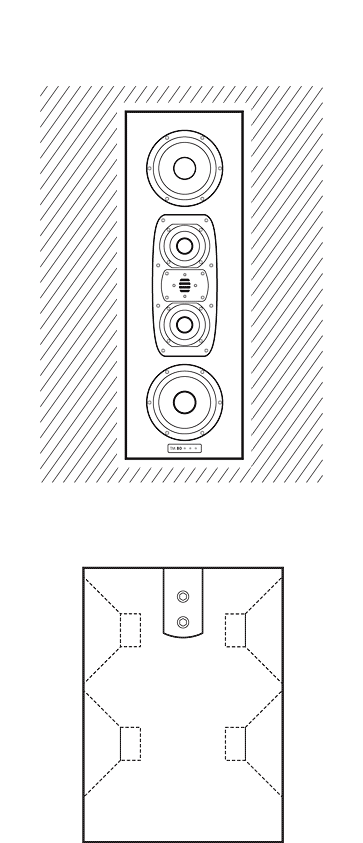 TM Standard Soffit mounted Subwoofer 90° turned, placed near the wall
TM Standard Soffit mounted Subwoofer 90° turned, placed near the wall
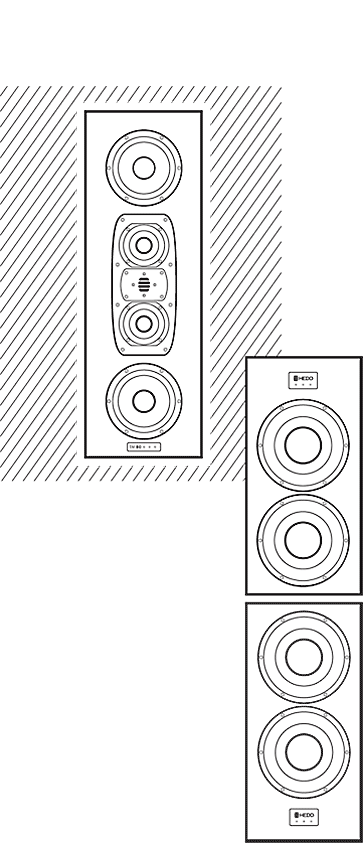 TM Extended Tower Soffit mounted TM 80 and TMS 36 at different position
TM Extended Tower Soffit mounted TM 80 and TMS 36 at different position
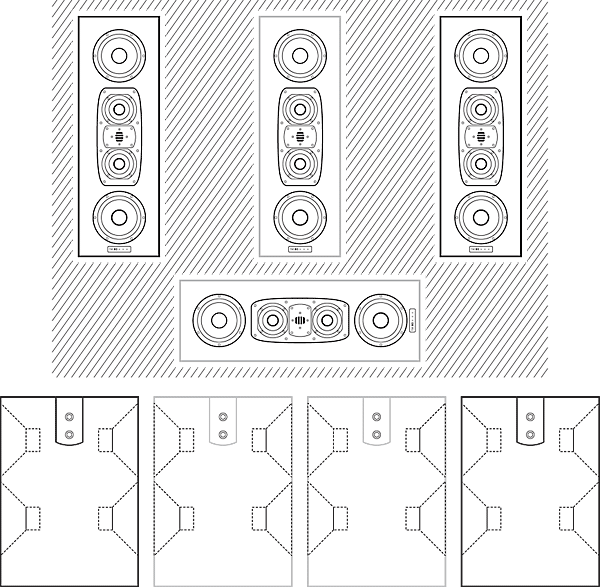
TM 5.1 front area with
3x TM 80 (middle TM 80 vertical or horizontal)and 2x or 4x TMS 36 Subwoofer 90° turned around, placed near the wall
| TM 80 | TMS 36 | |
| Woofer | 2 | 4 |
| Basket Ø | 7.2” (182 mm) | 9” (223 mm) |
| Voice coil Ø | 2” (51 mm) | 2” (51 mm) |
| Midrange | 2 | – |
| Basket Ø | 4.7” (120 mm) | – |
| Voice coil Ø | 1.25” (32 mm) | – |
| Tweeter | 1 | – |
| Type | HEDD AMT | – |
| Equiv. Diaphragm Ø | 2.2” (56 mm) | – |
| General data | ||
| Amplification (ICEpower®) | 3 x 300 W | 2 x 600 W |
| Input gain | -20 dB … +6 dB | -20 dB … +6 dB |
| Input impedance | 10 kOhm | 10 kOhm |
| High Shelf EQ > 2 kHz | ±4 dB (at 20 kHz) | |
| Frequency response | 80 Hz (-6 dB) – 50 kHz | 20 Hz (-3 dB) – 80 Hz (-6 dB) |
| THD 102 dB/1m | ≤1 % | ≤1 % |
| Max. SPL In half space 1 m | ≥120 dB SPL | ≥ 122 dB SPL |
| Crossover frequency | 250 Hz, 2.5 kHz | 80 Hz (- 6 dB) |
| Weight | 35 kg | 36 kg |
| Dimensions W x H x D | 280 x 835 x 400 mm | 280 x 580 x 400 mm |
With the HEDD Lineariser® VST/AU/AAX plugin, we have created a unique solution for one of the most challenging problems in loudspeaker designing: Linear Phase Response. The Lineariser® flattens both, the phase and frequency response of your HEDD monitors in unparalleled quality and without any DSP involved!
Download the Lineariser® and listen for yourself.


 English
English Suomi
Suomi Latviešu
Latviešu Lietuvių
Lietuvių


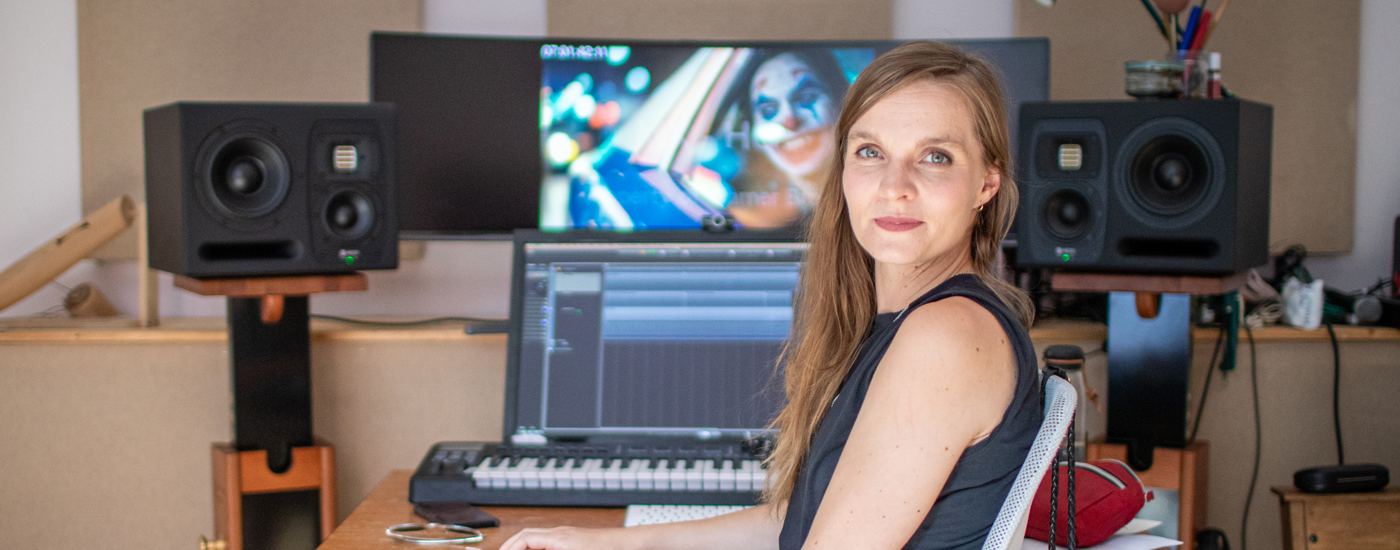
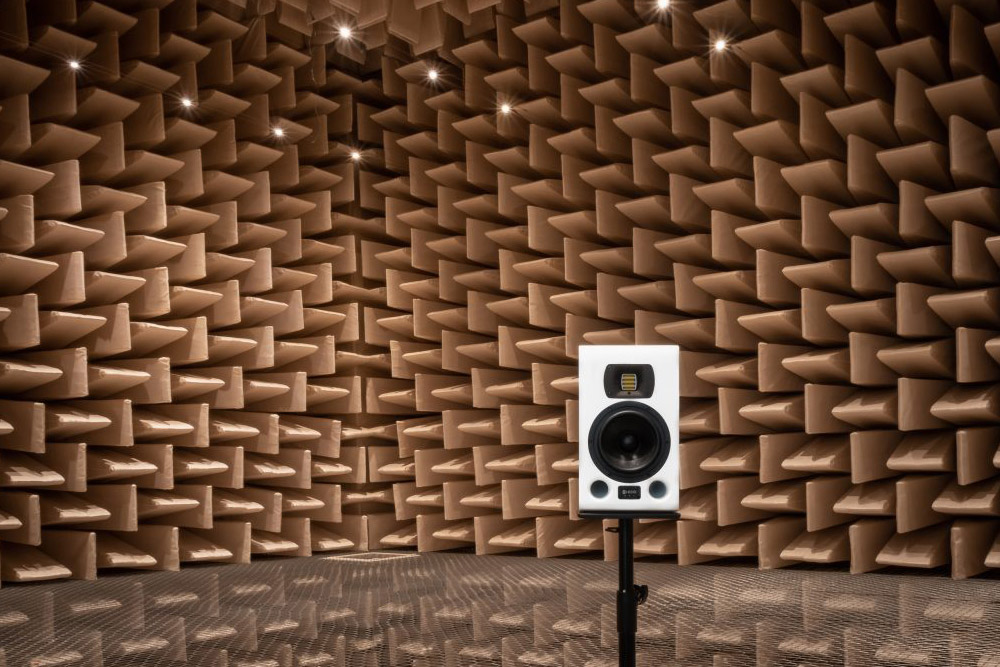
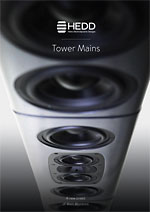
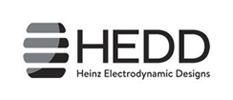
 seastone.audio
seastone.audio